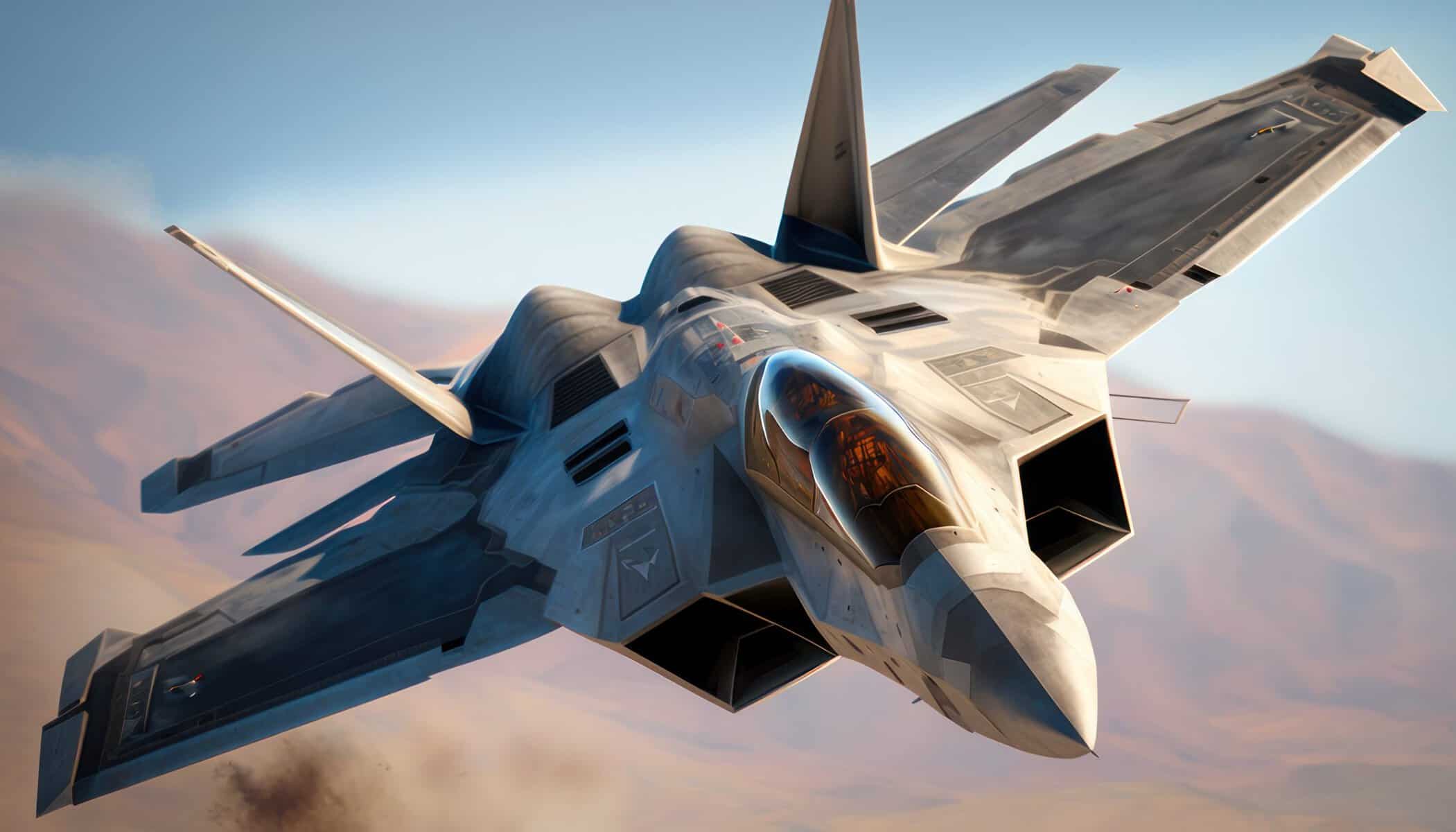The F-22 Raptor, developed by Lockheed Martin, is one of the most advanced fighter aircraft in the world. As a product of the United States Air Force, it was designed to be a superior air dominance fighter capable of engaging in high-stakes aerial combat. However, one notable aspect of the F-22’s operational deployment is its absence from aircraft carriers. Understanding this phenomenon requires a deep dive into the aircraft’s specifications, intended roles, and the operational strategies of the U.S. military.
First and foremost, the F-22 Raptor is a land-based air superiority fighter. Its design emphasizes stealth, speed, and agility, allowing it to gain supremacy in the skies. Aircraft carriers, on the other hand, typically deploy carrier-based aircraft designed for a variety of roles, including strike missions, reconnaissance, and support. The primary aircraft that operate from carriers, such as the F/A-18 Hornet and the newer F-35C Lightning II, are specifically built to handle the unique requirements of carrier operations, including catapult launches and arrested landings. The F-22 was not designed with these capabilities in mind, which is a fundamental reason it does not appear on carriers.
Moreover, the F-22 Raptor has been tailored for high-altitude, high-speed engagements that often take place above the range of naval air power. Its mission profile includes advanced air combat, and it is equipped with cutting-edge technology such as thrust vectoring, high-performance avionics, and advanced radar systems, all of which are optimized for operations from land-based airfields. The strategic focus on land-based operations reflects the Raptor’s role in ensuring air supremacy over enemy territory rather than engaging in naval operations.
Another significant factor is the cost and availability of the aircraft. The F-22 is one of the most expensive fighter aircraft ever built, with a per-unit cost estimated to exceed $150 million. Limiting its deployment to land-based operations helps maintain an effective and economically viable fleet. Additionally, the United States has a limited number of operational F-22s (approximately 186), which necessitates careful allocation of these critical assets. By keeping the Raptor in land-based squadrons, the Air Force maximizes its utilization in high-priority regions while ensuring adequate air cover over land.
Furthermore, the F-22’s operational environment is tailored for air superiority missions, which may not necessarily align with the overarching role of carrier air wings that are typically more diversified. A carrier’s air group is designed to balance strike capability, electronic warfare, and tactical support. The F-22’s advanced capabilities would be underutilized in such a mixed environment, thereby reinforcing the decision to maintain its function as a dedicated air-to-air combat aircraft.
In conclusion, the absence of the F-22 Raptor on aircraft carriers comes down to several key factors: its unique design for land-based operations, the need for specialized carrier aircraft, the high cost of production, and the focused mission profile of the Raptor. As military technology continues to evolve, the Raptor stands as a testament to the importance of air superiority, ensuring that the U.S. maintains its edge in modern aerial warfare, even if it doesn’t take to the skies from the decks of aircraft carriers.
F-22 Raptor Insights: Tips, Life Hacks, and Interesting Facts
The F-22 Raptor is not just an engineering marvel but also a fascinating subject of study for aviation enthusiasts and militarists alike. For those looking to deepen their understanding of this incredible fighter aircraft, here are some tips, life hacks, and intriguing facts related to the F-22 Raptor.
1. Learn the Basics of Aerodynamics
Understanding the principles of aerodynamics can greatly enhance your appreciation of the F-22’s capabilities. Concepts like lift, thrust, and drag are fundamental to fighter jet performance. Read up on these principles to better grasp how the F-22 achieves its remarkable agility.
2. Explore the Technology Behind Stealth
The F-22’s stealth capabilities set it apart from other fighter jets. Investigate how radar-absorbing materials and special design features reduce its radar cross-section. Learning about the science behind stealth technology can provide context for the Raptor’s combat effectiveness.
3. Stay Informed on Military Aviation
Following military news and advancements in aviation technology will keep you updated on future developments related to the F-22, including upgrades and potential successors. Websites like Lockheed Martin often share articles about new technologies and innovations.
4. Visit Airshows or Museums
One of the best ways to appreciate the F-22 is to see it up close. Check local airshows for demonstration flights or visit aviation museums that may feature an F-22. This experiential learning can leave a lasting impression and deepen your understanding of aviation history.
5. Join Aviation Forums
Engaging with communities of like-minded aviation enthusiasts can provide insights and different perspectives on the F-22. Online forums and social media groups allow for discussion on technical specifications, historical impacts, and personal experiences related to military aircraft.
6. Familiarize Yourself with Military Doctrine
The operations involving the F-22 are deeply tied to U.S. military doctrine. Understanding concepts like air superiority and force projection can inform you about how the F-22 fits into broader military strategies. Resources from the U.S. Department of Defense can be beneficial.
Interesting Fact: The Raptor’s Speed
Did you know that the F-22 can fly at speeds exceeding Mach 2 without afterburners? This unique trait, combined with its super maneuverability, allows it to outpace and outmaneuver potential adversaries.
Interesting Fact: Limited Production
Only 195 units of the F-22 were produced due to high costs and shifting military priorities. This rarity has made the Raptor a coveted subject for both military historians and aviation collectors.
Final Thoughts
The F-22 Raptor is not just a fighter jet; it’s a symbol of technological advancement in military aviation. By engaging with various resources, discussing with experts, and experiencing aviation firsthand, you can develop a rich understanding and appreciation for this extraordinary aircraft.
For more insights into military technology and aviation, be sure to check out U.S. Air Force and U.S. Department of Defense.
The article has been updated: 2024-11-02 09:50
Here are some suggested links related to the title “The F-22 Raptor: Why It Does Not Appear on Aircraft Carriers”:
1. Lockheed Martin – The official website of Lockheed Martin, the manufacturer of the F-22 Raptor, providing detailed information about the aircraft’s features, capabilities, and development.
2. U.S. Air Force – The official site of the U.S. Air Force, which offers insights into the operational roles of the F-22 Raptor and its strategic importance in modern aerial defense.
3. U.S. Department of Defense – The main site of the Department of Defense, featuring news, information, and resources about military aircraft, including the F-22 and its place in the U.S. military fleet.
4. Aviation Week – A leading source for aerospace and defense news, providing in-depth articles and analysis on military aircraft and their operational contexts.
5. Jane’s Information Group – A respected source for military and defense intelligence, offering reports and updates on various military aircraft, including the capabilities of the F-22 Raptor.
6. Air & Space Magazine – A publication that covers aviation and space exploration, featuring historical and current articles about significant aircraft, including discussions on the F-22 Raptor.
7. Military.com – A comprehensive resource for military news, benefits, and analysis including articles discussing the role of specific aircraft in the military, such as the F-22.
8. The New York Times – The site of one of the leading newspapers in the world, offering coverage and opinion pieces on military aviation and defense policy, relevant to the discussion of the F-22 Raptor.
9. Wikipedia – A free online encyclopedia that provides a wealth of information on the F-22 Raptor, including its design, role, and why it is not deployed on aircraft carriers.
10. Defense News – A news outlet focused on defense and military affairs, covering the latest developments within the defense community, including articles on modern military aircraft like the F-22.
The article has been updated: 2024-11-03 18:32
Why doesn’t the F-22 Raptor operate from aircraft carriers?
The F-22 Raptor does not operate from aircraft carriers primarily due to its design and operational requirements. Unlike aircraft designed specifically for carrier operations, the F-22 lacks the necessary modifications for launching and recovering at sea. Carrier-based aircraft typically require strengthened landing gear, tailhooks for arrestor wires, and a foldable wing design to maximize space on the flight deck. Additionally, the F-22 was developed as an air superiority fighter with a primary focus on land-based operations and does not have the same carrier compatibility as aircraft like the F/A-18 Hornet. Instead, the U.S. Navy relies on other aircraft specifically designed for carrier use while the F-22 remains a land-based asset within the Air Force.







